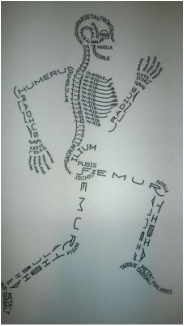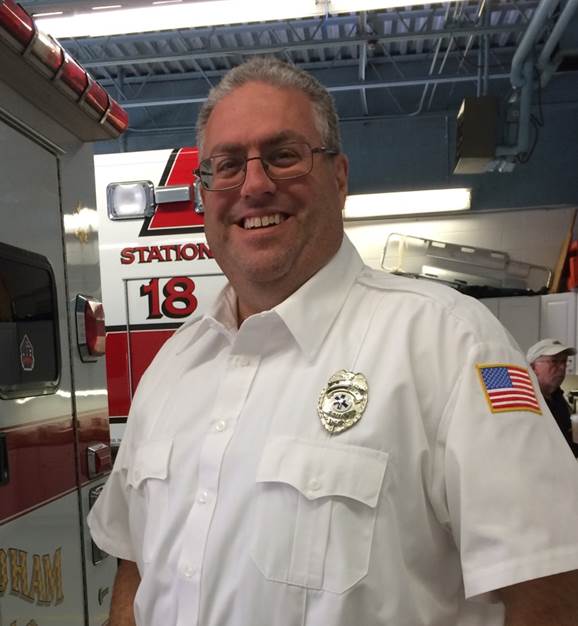|
A journey of a thousand miles begins with a single step -- Laozi, Chinese philosopher (also known as Lao Tzu) I've had a couple of weeks now to reflect upon the completion of the EMT course, and my successful certification by the state of New Jersey. I want to again thank my wife and son for their patience with me, and to everyone that offered their support and well wishes.
The experience was both easier and more challenging than I had expected. In all honesty, the course material wasn't particularly difficult to understand, even with the use of medical terminology sprinkled throughout. The hands-on and practical skills weren't particularly difficult either, whether it was applying trauma bandages, inserting airways, performing CPR, or just moving and lifting patients. On the other hand, I was challenged to overcome an initial desire to simply 'help' a patient with what appeared to be an immediate discomfort or pain, and rather to slow down and assess the entire situation, looking for those more hidden issues that actually posed a greater life risk. It took a bit of time for me to not just understand the importance of this, but to actually internalize it to the point that it became natural to slow down rather than speed up in times of crisis. Not that I was always perfect at it.
0 Comments
Having just wrapped up the third exam, it feels like a great weight has been lifted from my shoulders. With a little more than a 40 hours remaining (a month of weekends, in my case), the end of the EMT coursework is within sight.
Most of our remaining classes are really going to be review, helping us to fine tune our skills at patient assessment and interventions for both trauma and medical emergencies. In talking with some of my fellow students, everyone seems to be more comfortable than we were just a few weeks ago, having recognized that by breaking down how to approach patient care in to a logical and consistent manner, we've grown both comfortable and confident in our own skills and ability to handle many different situations. Of course, the instructors aren't going to just make it easy for us. The scenarios and situations they're starting to give us are more complex, often involving a mix of injuries and medical conditions, and requiring us to build upon our index of suspicion skills and determine which are serious life threats to be dealt with quickly, and which ones could have little or nothing to do with the situation at hand. For example, just because a patient presents with high blood pressure and is known to be diabetic doesn't necessarily mean that either of these two conditions are linked to an underlying issue that we must treat. Where our initial scenarios were clearly set up so we could demonstrate an understanding of diabetic emergencies (and associated treatment options), instructors now want us to be able to treat our patients holistically, and not get overly focused on one specific piece of information at the expense of something more critical. And I got a real-life lesson in this just the other week.... Part of the practical skills we've been focusing on in class are the primary and secondary assessments that EMTs do on patients. While the primary assessment is done on scene, and focuses on managing life threats, the secondary assessment can be done on scene or in the back of the ambulance while we are transporting a patient to the appropriate medical center.
The secondary assessment, if we aren't still actively managing life threats (like performing CPR), allows for a more through inspection of the patient, either for a specific injury or illness symptom (assuming they are conscious and alert enough to talk with us), or a full-body scan intended to ensure we don't miss any additional injuries (which is especially important with an unconscious or unresponsive patient, or even a conscious one with an altered mental status). This also includes taking critical vital signs, including pulse and blood pressure, in order to determine if our interventions are producing the right positive results, or whether our patients are sliding towards dangerous grounds, such as shock. So ... Who would have thought that one of the best study aids I could get for this stuff would be my 8-year old son and his imagination? Well, not quite a million, perhaps. But a lot.
If you've ever had the need for an EMT's help, you've probably experienced the barrage of questions we ask. And we consider it a really good start when you're awake, alert, and able to answer those questions. Before our EMT classwork can start to talk about interventions for specific injuries or illnesses, it's important for us to identify what, exactly, we're dealing with. And while it's often easy to get the basics when you have a conscious and lucid patient, that isn't always the case. EMTs are drilled to take a specific step-by-step approach, called assessments, in order to ensure we first focus on critical life-threats, and then (and only then) identify and prioritize other issues our patients may be having. These assessments break down to the Primary Assessment (done when we first arrive on the scene), the Secondary Assessment (which may be done on scene, in the ambulance), and re-assessments as needed or warranted by the specific issues and interventions being undertaken. At this point in my EMT course work, we're starting to practice these assessment skills, linking signs and symptoms to the knowledge of anatomy we've been learning, before we move and transport patients anywhere else. And it comes with learning a bunch of mnemonics, such as AVPU, SAMPLE/OPQRST, and DCAP-BTLS (just to name a few), to ensure we don't miss any critical information.
The keys to providing effective care, however, requires us to understand human anatomy and how all the systems within our bodies both work and inter-relate. And while it is a major amount of stuff to learn, it's probably not much more than the average 8th grade health class or high school biology class.
|
AuthorJon Alperin, one of our MFAS volunteers, shares his journey to becoming an NJ certified EMT. from the Start
Here is Jon's journey, presented in time order:
Archives
June 2016
Categories
All
|



 RSS Feed
RSS Feed
